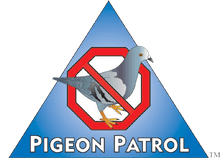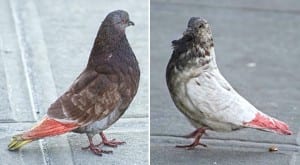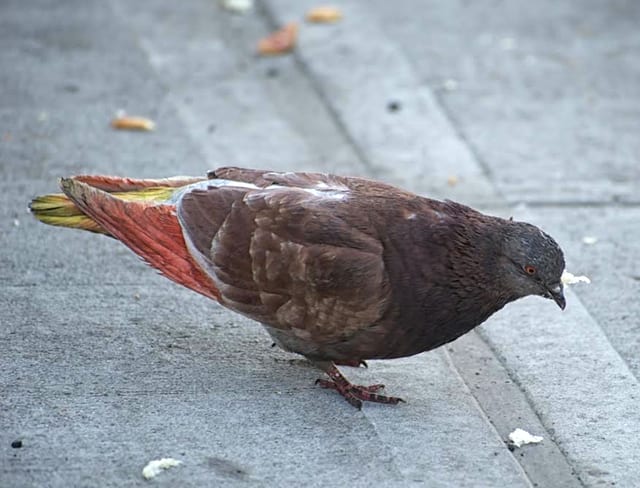
by Pigeon Patrol | Sep 11, 2023 | Bird Spike, Pigeon Predators, Pigeon Spikes, Pigeons, Pigeons in the News, Raccoons, Sparrows, UltraSonic Bird Control
Chicago ranks as the deadliest city in the United States for birds, according to a recent study by the Cornell Lab of Ornithology.
People might think that a larger city like New York would be guilty of more bird-window collisions than Chicago, but an unfortunate combination of building structures and geographical placement proves to be deadlier than size.
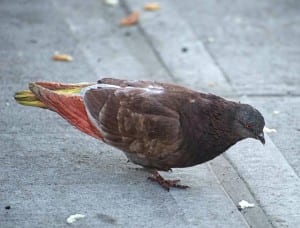
“It’s not just the size of the city, it also has to do with how bright the city is and also where the birds are flying themselves.” said Kyle Horton, the lead researcher on the study which evaluated 125 cities for their bird-killing potential.
Every fall, billions of birds will fly from the northern United States and Canada to the tropics and in the spring those birds return from their tropical vacation, according to the Cornell Chronicle.
Chicago is positioned on one of the primary flight paths, Horton said. It is the nation’s deadliest city for birds during both the spring and fall migrations. Other Great Lakes regional cities in the study’s top 20: Minneapolis (sixth spring, seventh fall), Detroit (13th spring, 15th fall), Indianapolis (16th spring, 13th fall).
Annette Prince witnesses this flight and its casualties firsthand. She is the director of the Chicago Bird Collision Monitors, a volunteer-based conservation project that has been protecting and recovering birds that are killed and injured in downtown Chicago during these mass migrations since 2003.
“They’re birds that certainly cannot afford to be having collisions as an additional reason to have their species reduced,” Prince said.
The decline of these species doesn’t only affect local populations and ecosystems. Migratory bird populations are an important part of a global environment, she said.
“Chicago is in the fortunate position to enjoy a huge migration of birds every spring and fall,” Prince said. “They’re following a pathway that they’ve used for thousands of years, before there was ever a city here.”
What was once a lakefront that travel-weary migrating birds could easily navigate and find pitstops offering food and rest is now a maze of lights, reflections and invisible yet deadly obstacles. This results in 5,000 dead birds per square-mile in Chicago, Prince said.
And that’s a low estimate. The volunteers at Chicago Bird Collision Monitors can’t find every crime scene when there are so many, and there are plenty that could be tampered with by passing pedestrians, cars, or a wandering cat or dog, Prince said.
Windows are often the perpetrator of these deaths, but lights act as a productive accomplice.
“It’s not necessarily that the lights are killing birds,” Horton said. “It’s that the lights seem to attract birds, it disorients them and elevates their risk of colliding with structures.”
To reduce the risk of bird-window collisions, Horton encourages those who live in or work in buildings to turn off or dim unneeded lights. This is especially relevant at 7 p.m. to 8 p.m. for three to four weeks of spring and fall, which is when the majority of birds would be moving through the city, said Horton.
Reducing lights can decrease bird-window collisions, but building-designers and homeowners can also make changes to the windows themselves without living in a building devoid of natural light.
“The glass has to have some sort of visual noise, something that alerts the birds to the presence of a surface instead of an opening,” Prince said.
This visual noise could be decorations such as hanging banners, cords, ribbons, or sunshades in front of the window. It could also be modifications to the window itself like window films, decals, etchings, or use of glass that isn’t as reflective or transparent. Further information on measures and products that can be used to make windows less susceptible to bird-window collisions can be found on the websites of the Chicago Bird Collision Monitors and the American Bird Conservancy.
“We have the tools to make things safer for birds,” said Prince. “It’s just a question of people saying that it matters enough that we will do it.”
Migratory birds have been declining for decades and the lack of awareness of the importance of these options is a major setback in their use, said Pamela Rasmussen, an assistant professor in Michigan State University’s College of Natural Science.
“Everyone just wants nice shiny skyscrapers,” she said. “They have no idea what they’re doing to the bird population.”
Researchers are developing a glass with nanotechnology that birds can see but people can’t, she said.
Local ordinances could increase awareness. To make downtown Chicago safer for birds, Alderman Brian Hopkins introduced the Chicago Bird-Friendly Building Ordinance earlier this year.
It would limit the amount of transparent or reflective glass on the exterior of buildings and specify glass that provides visual noise in situations that are proven hazardous for birds. It would also limit the amount, location and timing of exterior lighting and reduce the interior lighting visible from outside for all newly constructed buildings and any buildings that undertake a major renovation. More information can be found at the bird-friendly Chicago website.
Representatives of the Illinois Environmental Council, American Bird Conservancy and the Lincoln Park Zoo recently testified in support of the measure, according to the Office of the City Clerk.
But high-rise buildings within large urban centers aren’t the only bird hazards out there.
“A skyscraper certainly will on average kill more birds than a single residential home,” Horton said. “But…if you sum up all of the mortality that happens at low-rise buildings it’s substantially more than what would happen at a city level.”
So consider turning that porch light out or making your security lights motion-activated. It might save more than just electricity costs.
Source
Pigeon Patrol
Pigeon Patrol Products & Services is the leading manufacturer and distributor of bird deterrent (control) products in Canada. Pigeon Patrol products have solved pest bird problems in industrial, commercial, and residential settings since 2000, by using safe and humane bird deterrents with only bird and animal -friendly solutions. At Pigeon Patrol, we manufacture and offer a variety of bird deterrents, ranging from Ultra-flex Bird Spikes with UV protection, Bird Netting, 4-S Bird Gel and the best Ultrasonic and audible sound devices on the market today.
Canada’s top wholesaler for bird deterrent products for twelve consecutive years.
Contact us at 1- 877– 4– NO-BIRD, (604) 585-9279 or visit our website at https://www.pigeonpatrol.ca/
Bird Gone, Pigeon Gone, Pigeon problems, pigeon spikes, 1-877-4NO-BIRD, 4-S Gel, Bird Control, Pigeon Control, bird repellent, Bird Spikes, sonic bird repellent, stainless steel bird spikes, bird spikes Vancouver, Ultra Sonic Bird Control, Bird Netting, Plastic Bird Spikes, Canada bird spike deterrents, Pigeon Pests, B Gone Pigeon, Pigeon Patrol, pest controller, pest control operator, pest control technician, Pigeon Control Products, humane pigeon spikes, pigeon deterrents, pigeon traps, Pigeon repellents, Sound & Laser Deterrents, wildlife control, raccoon, skunk, squirrel deterrent, De-Fence Spikes, Dragons Den, Pigeon, Pigeon Patrol, Pigeons Roosting, Vancouver Pigeon Control, Bird Spikes, Bird Control, Bird Deterrent, Pigeon Deterrent, Surrey Pigeon Control, Pest, Seagull deterrent Vancouver Pigeon Blog, Birds Inside Home De-fence, Pigeon Nesting, Bird Droppings, Pigeon Dropping, woodpecker control, Keep The Birds Away, Birds/rats, seagull, pigeon, woodpecker, dove, sparrow, pidgeon control, pidgeon problem, pidgeon control, flying rats, pigeon Problems, bird netting, bird gel, bird spray, bird nails, bird guard, Pigeon control, Bird deterrents, Pigeon deterrents, Bird control, solutions, Pigeon prevention, Pigeon repellent, Bird proofing, Pest bird management, Pigeon spikes, Bird netting, Humane bird control, Bird exclusion, Urban bird control, Anti-roosting devices, Pigeon removal, Bird barriers
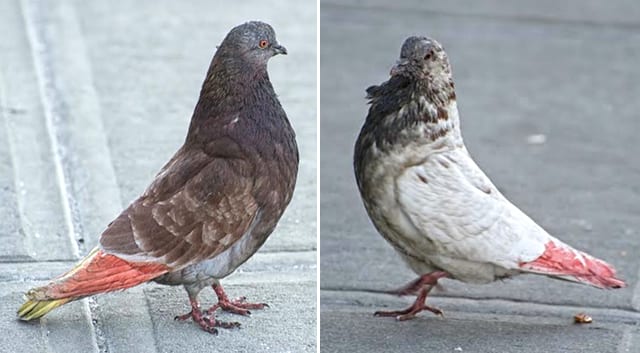
by Pigeon Patrol | Sep 11, 2023 | Bird Netting, Bird Spikes, Doves, history of pigeons, MBCA, pet bird, Pigeon Control
The pigeon problem in Kirkland Lake is so bad, police felt the need to issue a news release this morning warning residents to follow the law when dealing with them.
The town started renting out traps to residents today to capture pigeons, and police say that trappers will be responsible for the disposal of the birds, which includes a ban on throwing them in the garbage for curbside pickup. Successful trappers will instead have to take the pigeons for burial at the town dump.
“The OPP want to inform the residents that it is each individual’s responsibility to educate themselves on this topic and to ensure that they are acting within the laws, regulations and town by-laws,” says Constable Adam Gauthier.
The problem started, says Ashley Bilodeau, Kirkland Lake’s Manager of Planning and Land Development, when a few bird lovers started feeding the pigeons.
“We have a couple of residents that have been obnoxiously feeding pigeons to the point where we have some serious problem areas, so we passed a no-feeding bylaw back in the fall,” she told BayToday. “However, there is one individual who just continues to feed them despite the bylaw and has been charged. There’s been a few charges laid around town but there is one individual who is causing more headaches than normal.”
The fine for feeding is steep at $100, and that’s down from the $250 the town wanted to charge but the province wouldn’t allow it.
“So we’re trying to find different ways to combat the issue because it’s now causing problems to people’s properties and vehicles because there are so many of them.”
Bilodeau says the town has checked with the MNRF and it’s not illegal to kill pigeons although you are required to have a small game licence in order to trap and kill pigeons.
The town has not placed a limit on the number of pigeons people can capture, but police warn folks can’t use their guns to shoot the birds because discharging a firearm is prohibited within the Town of Kirkland Lake,
Bilodeau says poop is the problem.
“They’re also causing damage to buildings by trying to build nesting areas,” she adds. “We’ve got four traps here and people can come in and put in a deposit and take the trap for 10 days, and when they bring it back they get their money back.”
Pigeons were originally bred from the wild rock dove, which naturally inhabits sea-cliffs and mountains according to Wikipedia, so the bird finds the ledges of buildings to be a substitute for sea cliffs.
They have become abundant in towns and cities throughout the world. Due to their abilities to create large amounts of excrement and to carry disease, combined with crop and property damage, pigeons are largely considered a nuisance with steps being taken in many municipalities to lower their numbers or completely eradicate them.
Source
Pigeon Patrol
Pigeon Patrol Products & Services is the leading manufacturer and distributor of bird deterrent (control) products in Canada. Pigeon Patrol products have solved pest bird problems in industrial, commercial, and residential settings since 2000, by using safe and humane bird deterrents with only bird and animal -friendly solutions. At Pigeon Patrol, we manufacture and offer a variety of bird deterrents, ranging from Ultra-flex Bird Spikes with UV protection, Bird Netting, 4-S Bird Gel and the best Ultrasonic and audible sound devices on the market today.
Canada’s top wholesaler for bird deterrent products for twelve consecutive years.
Contact us at 1- 877– 4– NO-BIRD, (604) 585-9279 or visit our website at https://www.pigeonpatrol.ca/
Bird Gone, Pigeon Gone, Pigeon problems, pigeon spikes, 1-877-4NO-BIRD, 4-S Gel, Bird Control, Pigeon Control, bird repellent, Bird Spikes, sonic bird repellent, stainless steel bird spikes, bird spikes Vancouver, Ultra Sonic Bird Control, Bird Netting, Plastic Bird Spikes, Canada bird spike deterrents, Pigeon Pests, B Gone Pigeon, Pigeon Patrol, pest controller, pest control operator, pest control technician, Pigeon Control Products, humane pigeon spikes, pigeon deterrents, pigeon traps, Pigeon repellents, Sound & Laser Deterrents, wildlife control, raccoon, skunk, squirrel deterrent, De-Fence Spikes, Dragons Den, Pigeon, Pigeon Patrol, Pigeons Roosting, Vancouver Pigeon Control, Bird Spikes, Bird Control, Bird Deterrent, Pigeon Deterrent, Surrey Pigeon Control, Pest, Seagull deterrent Vancouver Pigeon Blog, Birds Inside Home De-fence, Pigeon Nesting, Bird Droppings, Pigeon Dropping, woodpecker control, Keep The Birds Away, Birds/rats, seagull, pigeon, woodpecker, dove, sparrow, pidgeon control, pidgeon problem, pidgeon control, flying rats, pigeon Problems, bird netting, bird gel, bird spray, bird nails, bird guard, Pigeon control, Bird deterrents, Pigeon deterrents, Bird control, solutions, Pigeon prevention, Pigeon repellent, Bird proofing, Pest bird management, Pigeon spikes, Bird netting, Humane bird control, Bird exclusion, Urban bird control, Anti-roosting devices, Pigeon removal, Bird barriers
y/bird nails/bird guard
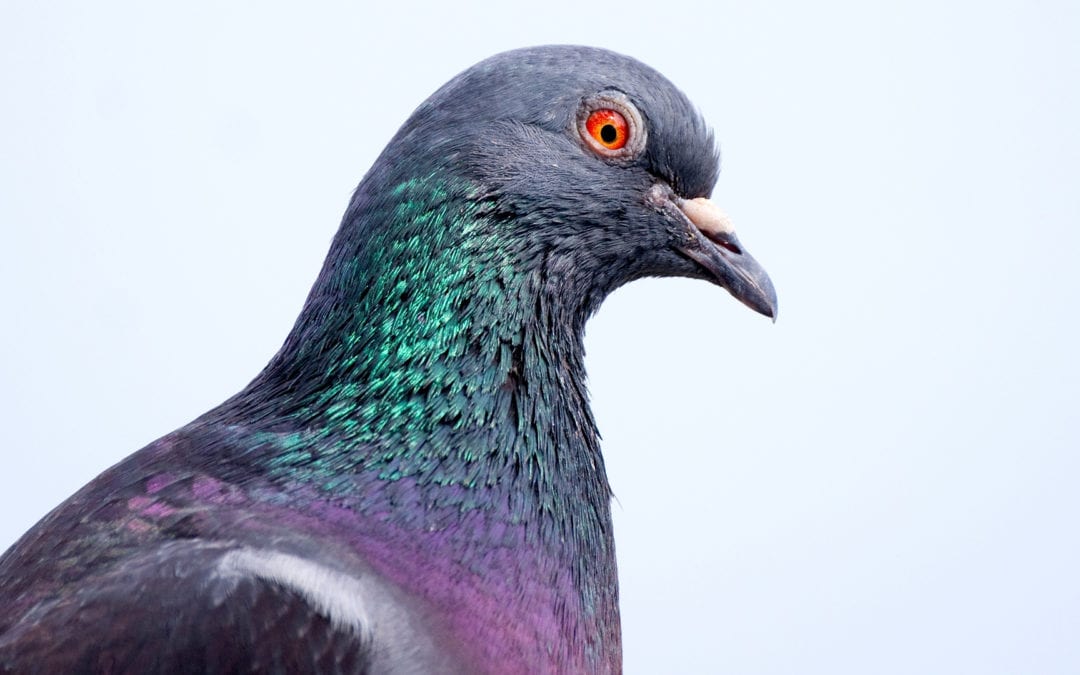
by Pigeon Patrol | Nov 2, 2020 | Pigeon Control, Pigeon Patrol's Services
Pigeon Prevention Methods & Damage Control
Habitat Modification
Some solutions include elimination of feeding, watering, roosting, and nesting sites is important in long-term pigeon control. Discourage people from feeding pigeons in public areas and clean up spilled grain around elevators, feed mills, and rail-car clean-out areas. Eliminate pools of standing water that pigeons use for watering. Modify structures, buildings, and architectural designs to make them less attractive to pigeons.
Exclusion
Pigeons can be excluded from buildings by blocking access to indoor roosts and nesting areas. Openings to lofts, steeples, vents, and eaves should be blocked with wood, metal, glass, rust-proofed wire mesh, plastic or nylon netting with spikes surround it.
Roosting on ledges can be discouraged by changing the angle to 45o or more. Sheet metal, wood, styrofoam blocks, stone, and other materials can be formed and fastened to ledges to accomplish the desired angle. Ornamental architecture can be screened with 1-inch (2.5-cm) mesh polypropylene u.v.-stabilized netting to prevent roosting, loafing, and nesting. To make the netting aesthetically pleasing, it can be spray painted to match the color of the building, but black is often the best choice. The life span of this netting can be as long as 10 years.
In a tool or machinery shed, barn, hangar, or other similar buildings, roosting can be permanently prevented by screening the underside of the rafter area with netting. Nylon netting can be stapled or otherwise affixed to the underside of rafters to exclude birds from nesting and roosting. Panels can be cut into the netting and velcro fasteners can allow access to the rafter area to service equipment or lights.
Porcupine wires are mechanical repellents that can be used to exclude pigeons. They are composed of a myriad of spring-tempered nickel stainless steel prongs with sharp points extending outward at all angles. The sharp points of these wires inflict temporary discomfort and deter pigeons from landing on these surfaces. The prongs are fastened to a solid base that can be installed on window sills, ledges, eaves, roof peaks, ornamental architecture, or wherever pigeons are prone to roost (Fig. 2). Elevate the base with plastic washers and anchor it with electrical bundle straps. Sometimes pigeons and sparrows cover the wires with nesting material or droppings, which requires occasional removal.
A variation of porcupine wires, ECOPICTM, mounts flat to a surface and has a triangular pattern of vertically oriented stainless steel rods.
Bird BarrierTM is another permanent nonlethal mechanical repellent used to exclude pigeons from structures. It is a stainless steel coil affixed to a base-mounting strip that can be attached to structural features as one would with porcupine wires.
Tightly stretched parallel strands of 16-to 18-gauge steel wire or 80-pound+ (36-kg+) test monofilament line can be used to keep birds off support cables, narrow ledges, conduit, and similar areas. Attach L-brackets at each end of the area or item to be protected and fasten the wire to the L-brackets with turnbuckles. Slack is taken out using the turnbuckles. L-brackets should be welded or attached with a cable clamp or aircraft hose clamps (threads on standard radiator clamps become stripped under the high torque loads required for holding L-brackets sup-porting wire over long distances). On heavily used structures, it may be necessary to stretch 3 lines at 2, 5, and 7 inches (5, 12, and 18 cm) above the surface.
Overhead monofilament grid systems, 1 x 1 foot to 2 x 2 feet (30 x 30 cm to 60 x 60 cm), have been used success-fully to reducing pigeon activity in en-closed courtyards. Persistent pigeons will likely penetrate parallel or grid-wire (line) systems.
Electric shock bird control systems (Avi-AwayTM, FlyawayTM, and Vertebrate Repellent System [VRSTM]) are available for repelling many species of birds, including pigeons. The systems consist of a cable durably embedded in plastic with two electrical conductors. Mounting and grounding hardware and a control unit are included. The conductors carry a pulsating electric charge. When pigeons make contact with the conductors and the cable, they receive a shock that repels but does not kill them. The cable can be in-stalled in situations also suitable for porcupine wires and stretched steel wires or monofilament lines. Although these devices and their installation are usually labor intensive and/or expensive, their effectiveness in some cases justifies the investment. These devices have a life span of 8 years on residential structures.
other control methods include:
Frightening
- Propane cannons
- Distress calls
- Mylar-style tape
- Scare-eye balloons
- Long-range acoustic devices
- Avitrol®
Repellents
- Polybutenes and capsaicin-based products
- Methyl anthranilate
Toxicants
Shooting
- .177-caliber pellet guns
- .22-caliber rifles
- Shotgun with No. 7½ shot
Trapping
- Multiple capture cage traps
- Single-bird traps
- Cannon nets
- Hand-held nets
- Mist netting
Other Control Methods
Source
Contact Us For Any Questions!
(604) 585-9279
About Pigeon Patrol:
Pigeon Patrol Products & Services is the leading manufacturer and distributor of bird deterrent (control) products in Canada. Pigeon Patrol products have solved pest bird problems in industrial, commercial, and residential settings since 2000, by using safe and humane bird deterrents with only bird and animal friendly solutions. At Pigeon Patrol, we manufacture and offer a variety of bird deterrents, ranging from Ultra-flex Bird Spikes with UV protection, Bird Netting, 4-S Gel and the best Ultrasonic and audible sound devices on the market today.
Contact us at 1- 877– 4– NO-BIRD, (604) 585-9279 or visit our website at www.pigeonpatrol.ca
Bird Gone, Pigeon Gone, Seagull Gone, Pigeon prevention methodsPigeon problems, pigeon spikes, 1-877-4NO-BIRD, 4-S Gel, Bird Control, Pigeon Control, bird repellent, Bird Spikes, sonic bird repellent, stainless steel bird spikes, bird spikes Vancouver, Ultra Sonic Bird Control, Bird Netting, Plastic Bird Spikes, Canada bird spike deterrents, Pigeon Pests, B Gone Pigeon, Pigeon Patrol, pest controller, pest control operator, pest control technician, Pigeon Control Products, humane pigeon spikes, pigeon deterrents, pigeon traps, Pigeon repellents, Sound & Laser Deterrents, wildlife control, raccoon, skunk, squirrel deterrent, De-Fence Spikes, Canada bird spikes, Canada pigeon, pigeon control, pigeon patrol, pigeon. Kill pigeons, crow, starling, Pigeon Habitat, Pigeon identifications, Pigeon Spikes, Ultrasonic Pest Repellers, Pest Control, Bird Spike Installation, Netting Installation, Pigeon Prevention Methods & Damage Control, Bird netting,
The post Pigeon Prevention Methods & Damage Control appeared first on Pigeon Patrol Canada – Bird Control Products & Services.
Filed Under: 4-S Gel Bird repellent, Animal Deterrent Products, Bird Deterrent Products, Bird Netting, Pigeon Patrol’s Services, Pigeon Spikes, UltraSonic Bird Control
by Ryan Ponto | Mar 12, 2017 | Bird Deterrent Products, Bird Netting, Bird Spikes, UltraSonic Bird Control
OKALOOSA ISLAND — A gray cloud flies low every day over a sun-kissed beachgoer near the Okaloosa Island Fishing Pier.
It’s not a cloud filled with sadness or rain, but one made up of a flock of feathery friends flying in to greet “the pigeon man.”
Resting under a deep blue umbrella with a thick coat of sunscreen on his nose, Dayn Lacke of Cinco Bayou, as he’s formally known, spends his days in a lawn chair soaking up the sunshine. Lacke said it was five years ago when he threw a cracker in the sand and began his passion for pigeons.
“I come out here more than the lifeguards,” Lacke said. “I come out here every day. It could be three hours or it could be all day long. Five years ago I saw a pretty white pigeon and started feeding that one crackers. She got friendly with me. We called her Angel.”
Lacke, a semi-retired architectural illustrator, now has up to 120 pigeons he feeds daily. He said you’ll rarely see a seagull among the group because he only buys wild bird seed, which is the healthiest option for the pigeons.
“I go through about 35 pounds of bird seed each week,” Lacke said. “The bird seed is too small for the seagulls to pick up. In the mornings, they (pigeons) will normally meet me on the boardwalk and line up on the handrails. I then walk through a gondola of pigeons.”
MooMoo, LuLu, Powder, Brownie, Baby and Speck are among Lacke’s favorite birds that he has named. He needs only to call their names for the birds to fly and land on this index finger.
“I formed bonds with roughly 30 of the pigeons,” Lacke said. “I named those, but you can’t name them all.”
Lacke said he asks other beachgoers only one thing: “Do not chase my birds.”
“I would say 95 percent of people walk by with a smile on their face,” he said.
Five percent are dumbfounded or grossed out or freaked out. The pigeons are very tame. When people chase them, it can break their feet, he said.
“I see a lot of people ducking and diving when the pigeons are flying,” Lacke added. “It’s not like they’ll run into you. They’re fine navigators. As long as you’re not a window, I think you’re okay.”
Jenna Testa, a wildlife health technician at the Emerald Coast Wildlife Refuge on Okaloosa Island, said pigeons are a form of rock dove that is not native to the Emerald Coast. Although helping aid non-native species could have a direct impact on the native ones, Testa said Lacke has also helped refuge workers untangle and aid many native birds on the beach.
“He has a big heart for the birds,” Testa said. “He has a good heart for animals in general.”
Lacke said he also is available to people walking by if they need information or a helping hand. As far as the birds, he said they will continue to be fed.
“If someone else can’t handle it, I’ll keep doing it,” he said. “Even if I come out here just to feed them and then leave, they’ll keep getting fed.”
About Pigeon Patrol:
Pigeon Patrol Products & Services is the leading manufacturer and distributor of bird deterrent (control) products in Canada. Pigeon Patrol products have solved pest bird problems in industrial, commercial, and residential settings since 2000, by using safe and humane bird deterrents with only bird and animal friendly solutions. At Pigeon Patrol, we manufacture and offer a variety of bird deterrents, ranging from Ultra-flex Bird Spikes with UV protection, Bird Netting, 4-S Gel and the best Ultrasonic and audible sound devices on the market today.
Voted Best Canadian wholesaler for Bird Deterrent products four years in a row.
Contact Info: 1- 877– 4– NO-BIRD (www.pigeonpatrol.ca)


